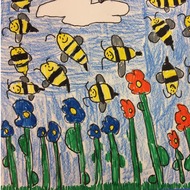(View Complete Item Description)
This video segment from Between the Lions is an original, animated retelling of the classic Aesops fable in which a grasshopper sings and dances while the ants gather food for winter. The grasshopper then has nothing to eat once the cold weather comes. In the end, the ants invite the grasshopper inside for a meal, and they all dance a merry mambo. Featured "m" words include: many, moons, moody, Murray, Marge, merry, Melanie, mangos, melons, mambo, music, moving, mushrooms, macaroni, managed, milk, Myrtle, mind, middle, month, mountains, melt, meanwhile, munched, moment, make, move, motioned, meatballs, mashed potatoes, magnificent, and meal. This video segment provides a resource for Fluency, Phonemic Awareness, Phonics, Letter Knowledge Awareness, and Phonological Awareness. ***Access to Teacher's Domain content now requires free login to PBS Learning Media.
Material Type:
Lecture




















